Venture into the vibrant and varied world of Animals that Start with V! Ever found yourself wondering which animal names begin with the letter V, only to draw a blank? Fret no more! We’ve compiled an exciting array of creatures, starting with the letter V, of course!
Overview of Animals That Start With V
1. Vagrant Shrew

| Scientific Name | Sorex vagrans |
| Where It Lives | Canada and United States |
| What It Eats | Spiders, earthworms, insects, plant material |
| Conservation Status | Least Concern (LC) according to the IUCN Red List |
Fun Fact: Vagrant Shrews can echolocate. Unlike bats, they don’t use it for hunting.
The tiny vagrant shrew is found in the western parts of the US and Canada, where it lives in open and wooded forest habitats.
These mammals are quite small, growing to 3.9 inches, including their 1.6-inch tail! Although tiny, they are voracious eaters and can consume about 160% of their body weight in food each day. Luckily they have very high metabolic rates. During the day these animals mostly rest, but can be busy for short stints, before resting again. They are much more active during the evening when they forage for food.
2. Vampire Bat
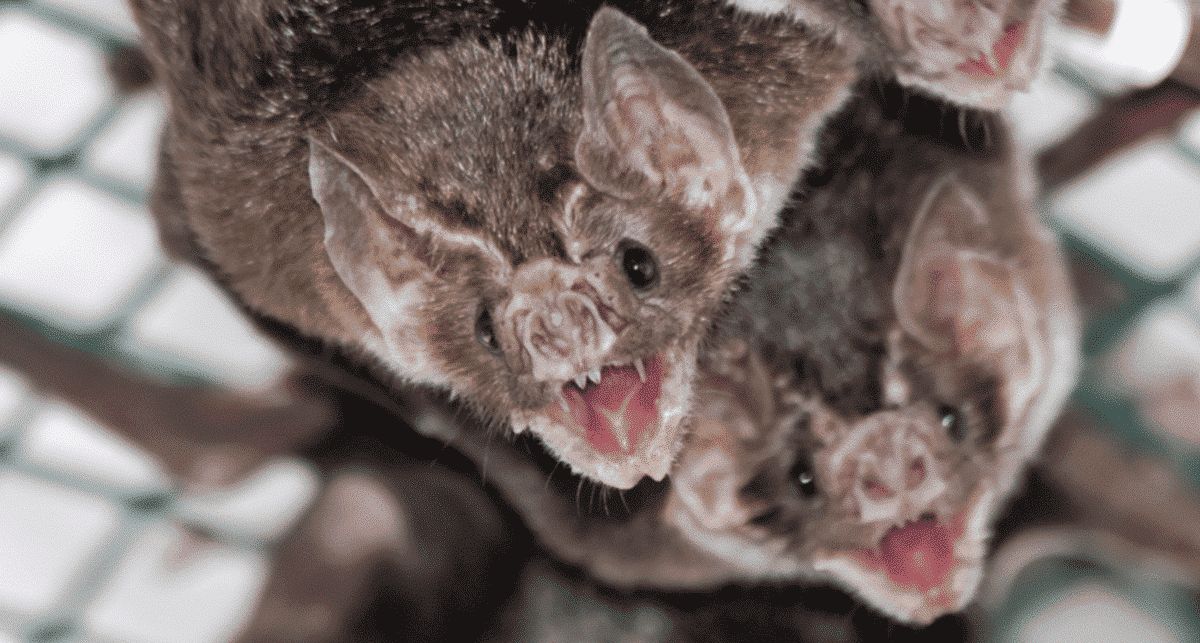
| Scientific Name | Desmodontidae |
| Where It Lives | Mexico, America, Carribean Islands |
| What It Eats | Animal blood |
| Conservation Status | Least Concern (LC) according to the IUCN Red List |
Fun Fact: Despite popular belief, Vampire bats don’t suck out the blood from their hosts. Instead, they bite the host and lap up the blood that flows out.
Three species of vampire bats exist, but all of them are similar in one particular feature. They all feed solely on blood.
The common vampire bat prefers to live in farmlands where it feeds off of cattle and other farm animals, whereas the other two species, the white-winged vampire bat and the hairy-legged vampire bat, live in forests where they feed on birds, reptiles, and other animals. The bats leave their nests during the evenings to hunt where they use echolation to orientate themselves and heat sensors on their faces to find their prey.
3. Vampire Squid
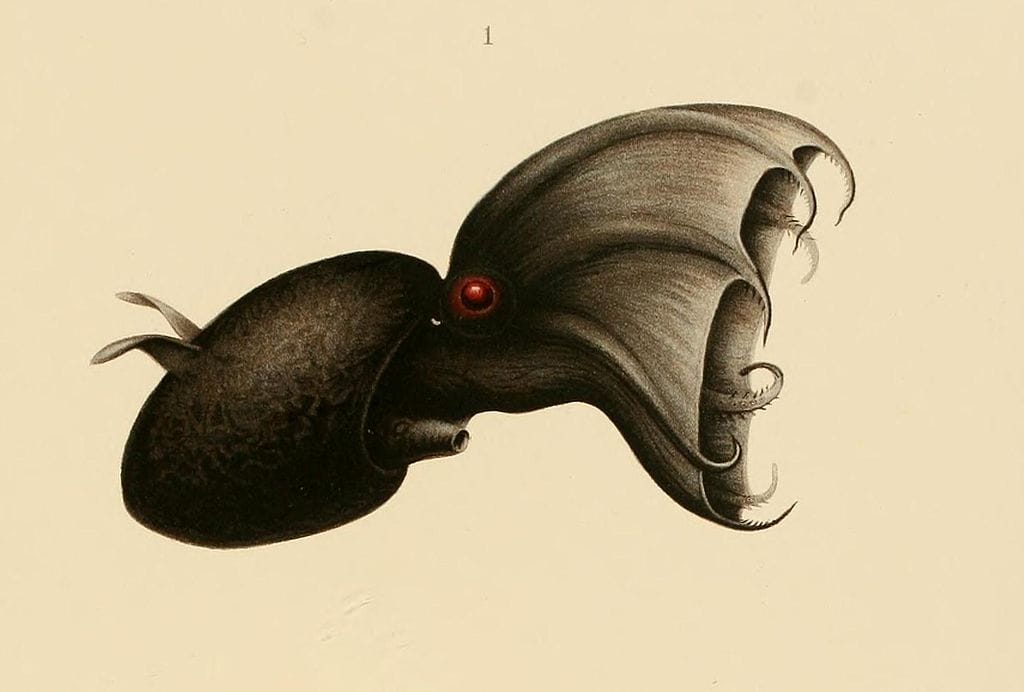
| Scientific Name | Vampyroteuthis infernalis |
| Where It Lives | Tropic and sub-tropic waters |
| What It Eats | Dead organic material |
| Conservation Status | Not Endangered |
Fun Fact: Vampire squids don’t feed on blood; they eat sea detritus, including fecal pellets and dead plankton.
The Vampire squid, a deep sea cephalopod, lives in the ocean’s oxygen minimum zone up to 3,000 feet deep in tropic and subtropic waters.
They have jet-black or red skin, red eyes, and a membrane that spreads around their tentacles. These give it a very vampiric appearance. Vampire squids are distinguished from octopuses and squids by their two long retractile filaments, putting them in their own order called Vampyromorphida. These deep-dwelling animals use their bioluminescent organs and peculiar oxygen metabolisms to survive in low-oxygen areas of the ocean. Although they mostly drift to conserve energy, these unique animals have the ability to swim at fast speeds for short distances.
4. Vancouver Island Marmot
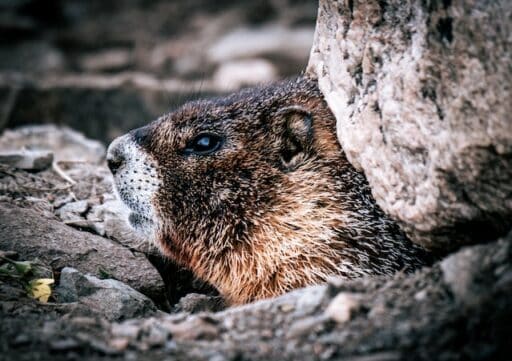
| Scientific Name | Marmota vancouverensis |
| Where It Lives | Canada |
| What It Eats | Plants |
| Conservation Status | Critically Endangered (CR) according to the IUCN Red List |
Fun Fact: Vancouver Island Marmots have a short gestation period of 30-35 days.
The Vancouver Island marmot, the largest member of the squirrel family, lives in the high mountains of Vancouver Island. Here they prefer areas with steep slopes, road banks, subalpine meadows and coniferous forests.
These large rodents weigh up to 15 pounds and live in underground burrows with their small social group. Being very territorial, they mark their property with the scent glands on their cheeks. They spend most of their days foraging, playing, running around, and baking in the sun. And when winter comes they hibernate for 210 days! These are some of the most endangered animals in the world, as climate change, habitat loss and predators all contribute to their declining numbers!
5. Variegated Squirrel
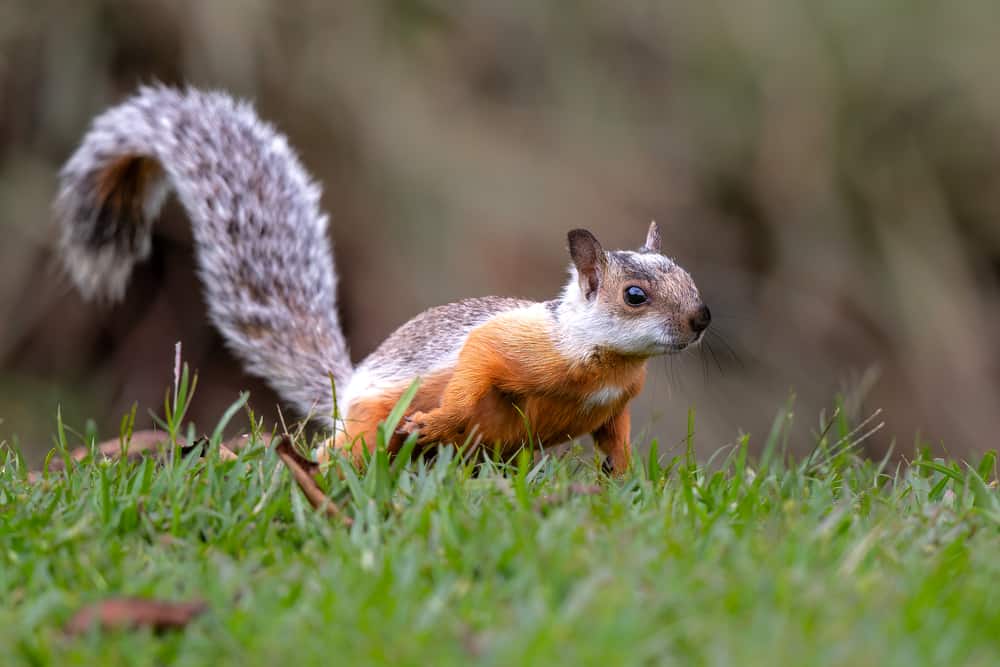
| Scientific Name | Sciurus variegatoides |
| Where It Lives | Central America |
| What It Eats | Seeds, fruits and insects |
| Conservation Status | Least Concern (LC) according to the IUCN Red List |
Fun Fact: Almost all squirrels hoard nuts, but you can count the Variegated Squirrel out of that activity.
The Variegated Squirrel is native to Central America, where they live in both dry and evergreen forest areas in Mexico, Costa Rica, Guatemala, El Salvador, Honduras, Panama, and Nicaragua.
These cute little animals live solitary lives, spending most of their time in trees. Here they also build their nests where these dinural squirrels spend their nights. They are super agile and jump from one branch to the next with ease! Females give birth to between 2 and eight babies, who are born blind and naked – fur only starts growing when they are about two weeks old.
6. Vaquita
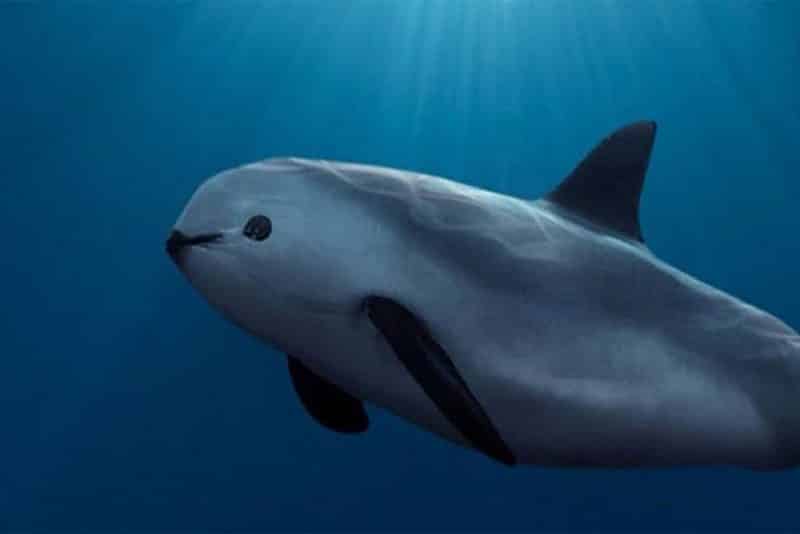
| Scientific Name | Phocoena sinus |
| Where It Lives | Mexico |
| What It Eats | Fish, crustaceans, squid |
| Conservation Status | Critically Endangered (CR) according to the IUCN Red List |
Fun Fact: Vaquitas give birth to live young and breathe air like any other mammal.
Vaquitas have the smallest habitat range of all marine mammals, living only in the turbid, shallow waters of the upper Gulf of California.
These small sea-dwelling mammals are closely related to whales and dolphins. Vaquitas are secretive and shy animals, even when they come to the surface for oxygen they barely disturb the water. They live either alone, as pairs, or in groups of up to seven. They are polygynous animals, meaning that one male exclusively mates with multiple females to produce a calf. The young are nursed by their mothers for about 8 months.
7. Velvet Asity
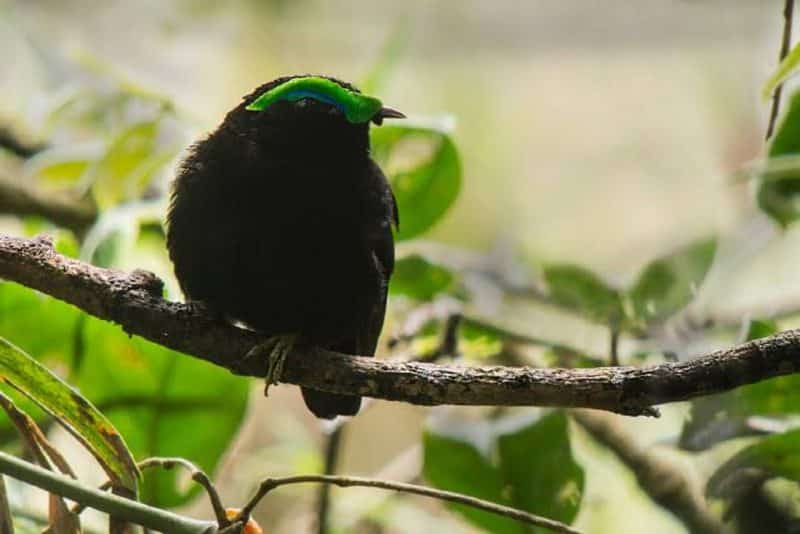
| Scientific Name | Philepitta castanea |
| Where It Lives | Madagascar |
| What It Eats | Berries and fruit |
| Conservation Status | Least Concern (LC) according to the IUCN Red List |
Fun Fact: The males are seen with yellow wingtips after molting, but these wear away.
The Velvet Asity is found only in Madagascar, where it lives in tropical and subtropical lowland forests.
These birds build hanging nests with small roofs covering the entrance. Velvet Asities have quite short tails and bodies of about 6 inches long. Males have yellow wingtips after molting, but the yellow disappears with time. Their feathers are dark in color, and the males also have a green patch that grows above their eyes – kind of like a funky eyebrow! They usually spend their time alone or in pairs, and are unfortunately not the strongest flyers out there. Luckily they enjoy sitting still for long periods of time.
8. Verreaux’s Sifaka
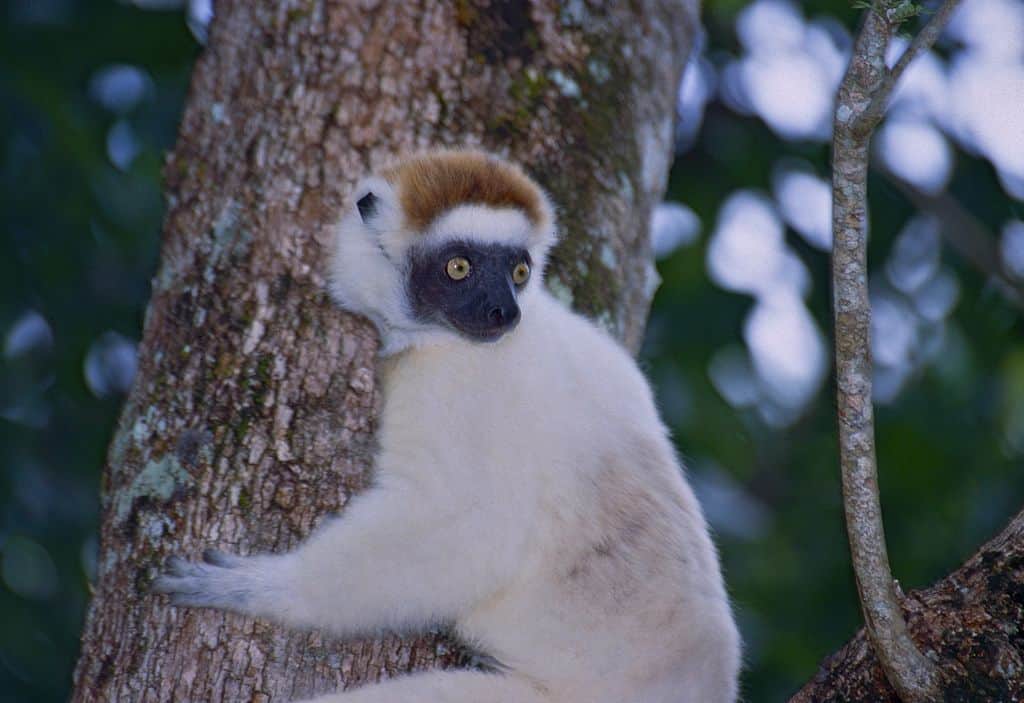
| Scientific Name | Propithecus verreauxi |
| Where It Lives | Madagascar |
| What It Eats | Bark, leaves, flowers, fruit |
| Conservation Status | Endangered (EN) according to the IUCN Red List |
Fun Fact: Verreaux’s Sifakas are so evolved to tree-dwelling that they can’t even walk on land. They hop instead.
Verreaux’s Sifakas, members of the lemur family, are only found in Madagascar. Here they live in a variety of habitats, including lowland forests to humid rainforests.
These white-furred animals live in social groups where the females are at the top of the hierarchy. In their groups, they tend to live peacefully, except during mating season! Verreaux’s sifakas have a polygynous way of mating, where the dominant male mates with many females to produce a single baby. Some friction between the group comes at this time when other males challenge the alpha to claim this right!
9. Vervet Monkey

| Scientific Name | Chlorocebus pygerythrus |
| Where It Lives | Sub-Saharan Africa |
| What It Eats | Leaves, fruits, flowers, roots, grasses, eggs, rodents, insects, birds |
| Conservation Status | Least Concern (LC) according to the IUCN Red List |
Fun Fact: Male Vervet monkeys are easily distinguishable from females by their bright blue testicles.
The Vervet Monkey, an Old World monkey, lives in savanna, woodland and forest areas close to water in Sub-Saharan Africa.
These playful monkeys spend most of their lives in trees, feeling the safest higher up. When they do go to the ground in search of food and water, they never find themselves far from trees! Vervet Monkeys’ arms and legs are more or less the same length which enables them to move with speed across the forest floors. These social animals live in groups of about ten and spend their days in search of food, and their evenings resting.
10. Vicuña
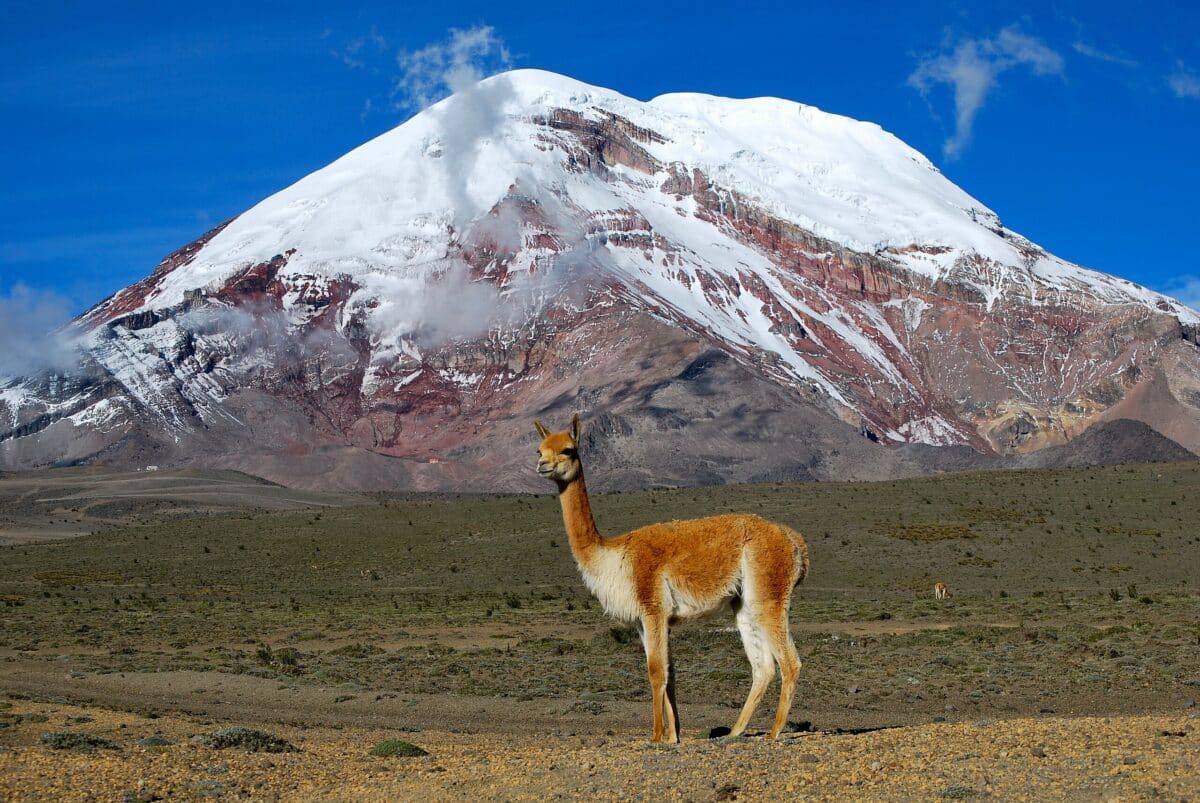
| Scientific Name | Vicugna vicugna |
| Where It Lives | Argentina, Peru, Bolivia and Chile |
| What It Eats | Grasses |
| Conservation Status | Least Concern (LC) according to the IUCN Red List |
Fun Fact: Vicuna wool is thin but is very effective in protecting the animal from cold. It’s no wonder it is so expensive.
Vicunas live in the high mountain areas and dry climates of the Andes – given the area has available water for them to drink.
These relatives of Llamas feature on the Peruvian coat of arms, as it is Peru’s national animal. These shy animals have separate territories for eating during the day and sleeping. They graze on low grasses at lower altitudes than where they sleep. Vicunas are scared animals and easily run away from anything that gives them a fright, warning the others with a high-pitched whistle. And if an encounter leads to confrontation, they will often spit at each other as a fight tactic.
11. Vinegaroon
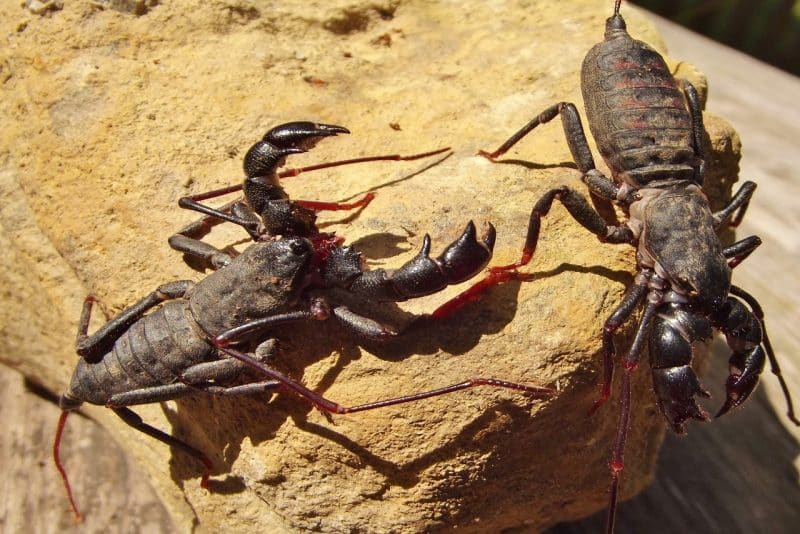
| Scientific Name | Mastigoproctus giganteus |
| Where It Lives | Southern United States and Mexico |
| What It Eats | Slugs, insects and worms |
| Conservation Status | Least Concern (LC) according to the IUCN Red List |
Fun Fact: Vinegaroons are surprisingly docile to humans, so some people keep them as pets.
The vinegaroon, or whip scorpion, lives at high altitudes in the southern United States and Mexico.
These scorpions are closer to spiders than scorpions. They are massive, growing to 2.4 inches – without their tail! From the base of their long, whipping tails they spray a chemical to defend themselves. This chemical has a strong vinegar smell, hence its name Vinegaroon! These animals have 8 eyes, but still have poor sight and use feeling to navigate. The female vinegaroon only reproduces once during her lifetime, but then she has around 40 offspring, all of whom she protects and cares for.
12. Viper
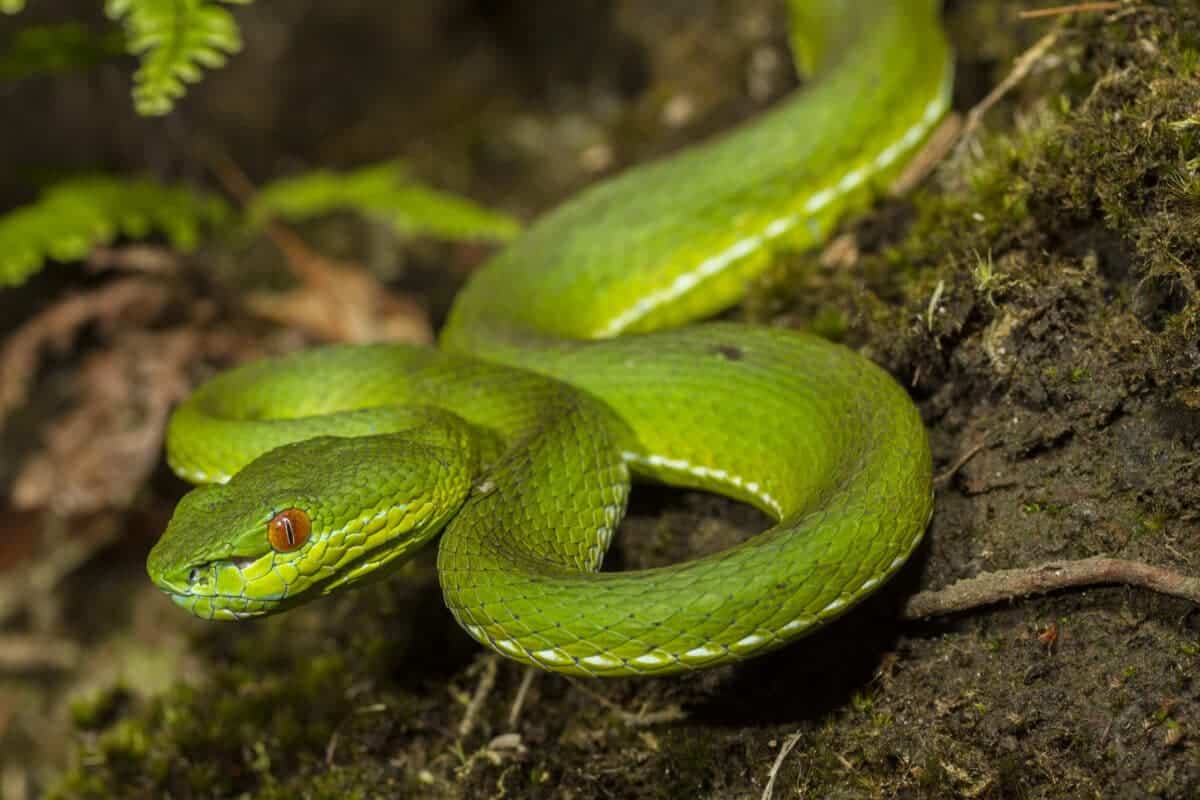
| Scientific Name | Viperidae |
| Where It Lives | Worldwide |
| What It Eats | Small mammals |
| Conservation Status | 30 species are listed as Vulnerable (VU), 33 species as Endangered (EN) & 10 Critically Endangered (CR) according to the IUCN Red List |
Fun Fact: Most vipers are ovoviviparous; this means that their young emerge after breaking out of their eggs in the mother’s body.
The viper snake family are venomous snakes found across the globe, with the exception of the cold climates of Antarctica, as well as Hawaii, Australia and Madagascar.
These snakes are known for their long, scary-looking hinged fangs. Vipers can open their mouths almost 180 degrees to deliver a bite. Penetrating their fangs into their victim and releasing their venom from the glands underneath their eyes. Vipers can also decide how much venom they want to release into their victim, normally determined by circumstances. Their intimidating fangs fold back when not in use and they can deliver dry bites saving their precious venom.
13. Viperfish
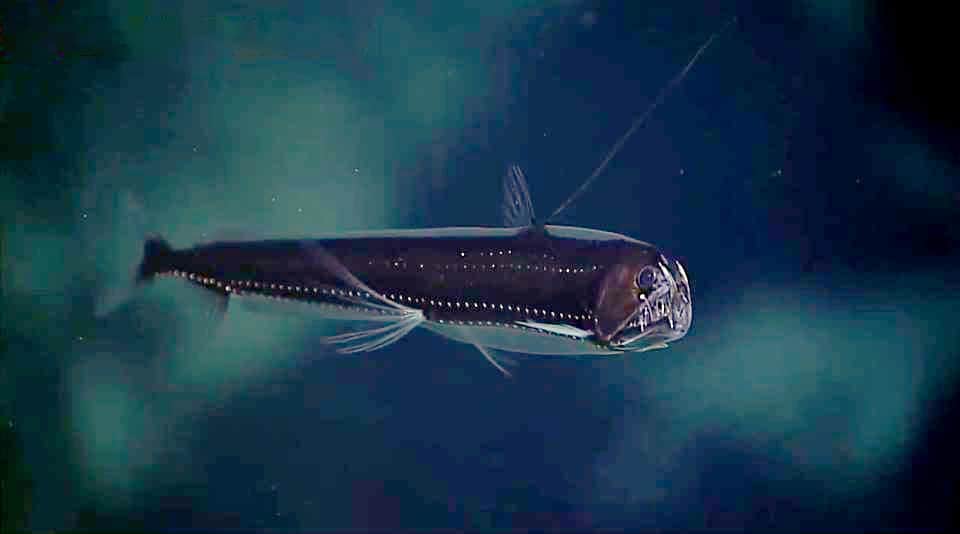
| Scientific Name | Chauliodus |
| Where It Lives | Tropical Oceans |
| What It Eats | Crustaceans and fish |
| Conservation Status | Not Endangered |
Fun Fact: Viperfish have photophores on their dorsal and ventral surface that they use to lure in prey.
The deep-dwelling Viperfish have 9 species in the family and live in the tropical areas of all Oceans.
Viperfish have teeth that look like long needles in both their upper and lower jaws – kind of like a bear trap! With these impressive sets of teeth, Viperfish grab their prey in a death grip. These deep sea fish have bioluminescent organs on the sides of their bodies used to camouflage themselves in the less than 1% light area they live in, or to lure prey. These intriguing fish only look like they are covered in scales, they are actually scaleless.
14. Virginia Opossum
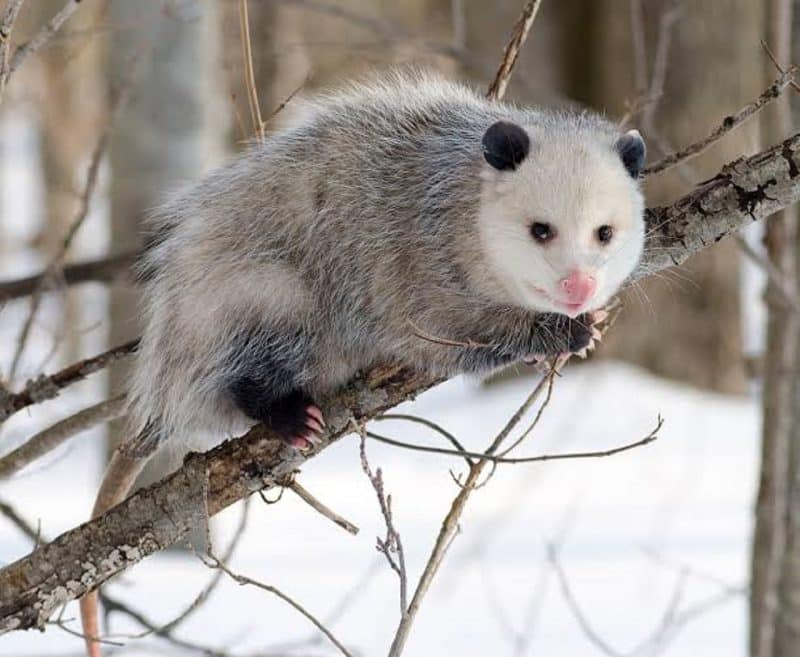
| Scientific Name | Didelphis virginiana |
| Where It Lives | Central America |
| What It Eats | Small animals, fruits, insects, garbage, carrion |
| Conservation Status | Least Concern (LC) according to the IUCN Red List |
Fun Fact: In times of extreme danger, the Virginia opossum pretends to be dead. That is where the phrase ‘playing possum’ comes from.
The Virginia opossum, or just possum, lives in many different habitats including, woodlands, forests, farmlands, marshes and swamps across Central America and Mexico. Making Virginia opossum the most northern marsupial in the world.
These solitary animals are most active from sunset to sunrise and are very territorial. During breeding season as many as 25 young can be born in a single litter. These newborns are about the size of a bee, and soon after birth, they find their way to their mother’s pouch. Here they latch to a nipple and remain that way for 2 months.
15. Visayan Spotted Deer
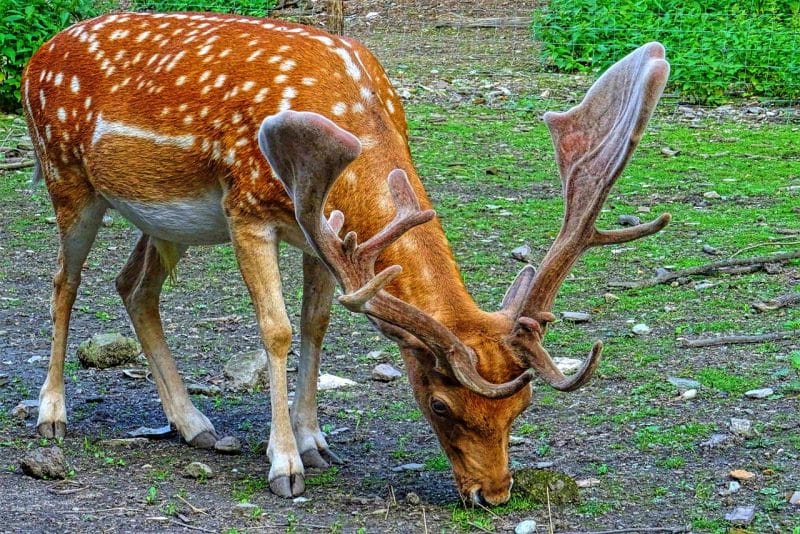
| Scientific Name | Rusa alfredi |
| Where It Lives | Philippines |
| What It Eats | Buds, leaves, grasses |
| Conservation Status | Endangered (EN) according to the IUCN Red List |
Fun Fact: Male Visayan Spotted Deer roars to attract females for mating.
Visayan Spotted Deer only live in rainforest areas in the Visayan islands of Panay and Negros in the Philippines.
These nocturnal animals received their name from the beige spots on their coat. Visayan spotted deer feed at dusk on a variety of grasses, buds, and leaves in the rainforest, but are very quick to hide if they feel any indication of danger. With only 700 mature individuals left over, Visayan spotted deer are listed as Endangered on the IUCN Red List, with their numbers still declining. Hunting, loss of habitat and the pet trade all play a role in their reducing numbers.
16. Visayan Warty Pig
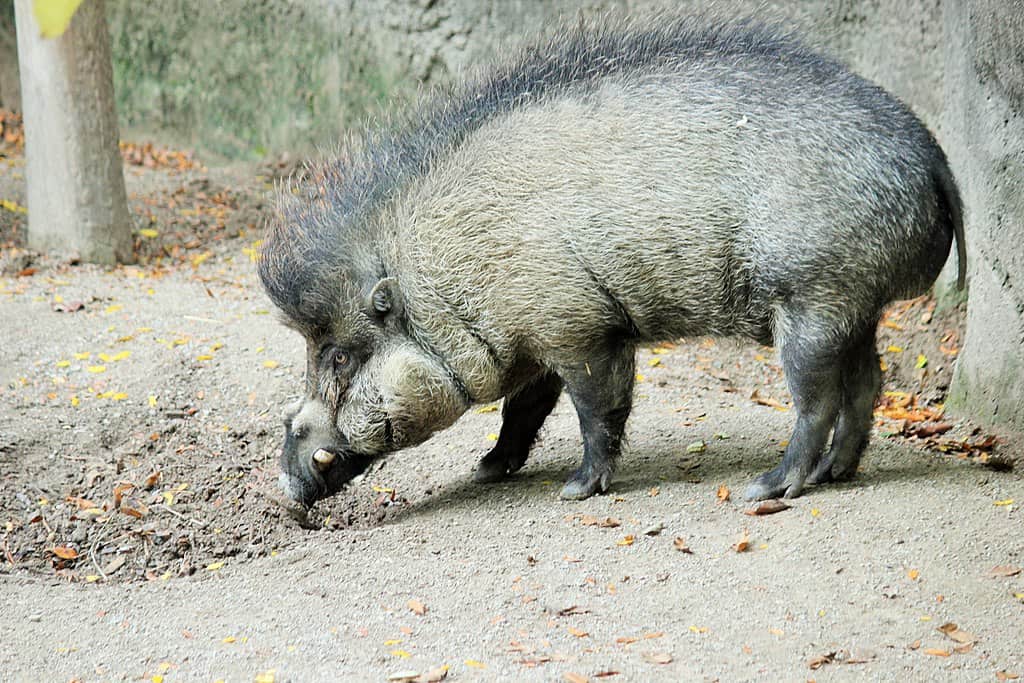
| Scientific Name | Sus cebifrons |
| Where It Lives | Philippines |
| What It Eats | Tubers, fruit, roots, crops |
| Conservation Status | Critically Endangered (CR) according to the IUCN Red List |
Fun Fact: These pigs are pretty ingenious and were seen digging with tools in a French zoo.
Visayan Warty Pigs are native to the Visayan islands in the Philippines, where they live in densely forested areas.
These pigs got their name from the fleshy bumps on their faces which look like warts. They live highly social lives and are often seen foraging and cooling down in water in family groups. They also keep in constant communication with each other through grunts, squeals, and other vocalizations. The females can give birth to between two and four piglets per year. Visayan Warty Pigs are marked Critically Endangered due to habitat loss, human exploitation and hunting activities.
17. Vlei Rat
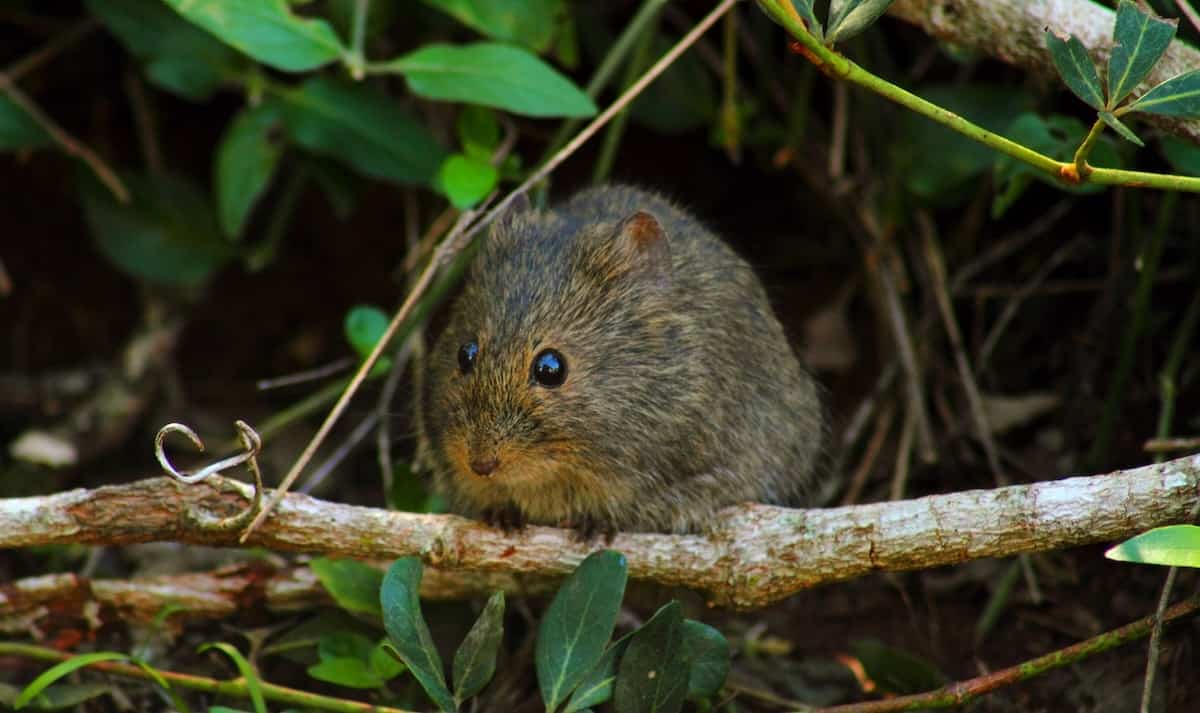
| Scientific Name | Muridae |
| Where It Lives | Africa |
| What It Eats | Leaves, stems, shrubs, roots |
| Conservation Status | Least Concern (LC) according to the IUCN Red List |
Fun Fact: Vlei rats have a lot of brown fat, which helps them break down to produce heat.
There are various Vlei Rat species belonging to the Muridae rodent family. They live in many different habitats across Africa.
Vlei rats have shorter faces and legs than most rodents and have coat colors of brown, grey, and many shades in between. These rodents are non-selective feeders and will eat most things they find. These animals build their nests close to river banks and have intricate tunnel systems they use to move around close to their nests – a means of protecting themselves from the many predators out there.
18. Volcano Rabbit
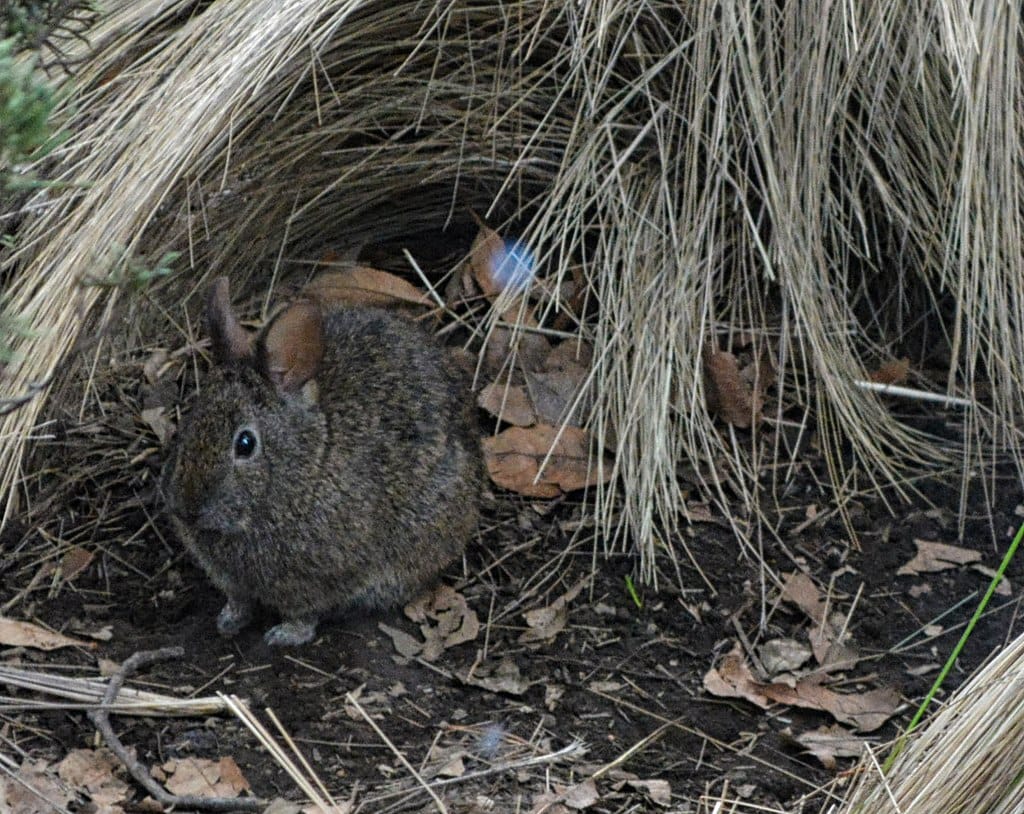
| Scientific Name | Romerolagus diazi |
| Where It Lives | Mexico |
| What It Eats | Grasses |
| Conservation Status | Endangered (EN) according to the IUCN Red List |
Fun Fact: Most rabbits thump their feet on the ground to warn of danger, but the Volcano rabbit emits high-pitched sounds instead.
The Volcano Rabbit is the second smallest rabbit in the world and lives only in Mexico on volcanoes.
These social animals live in small groups in burrows, some borrows are 16 inches deep and 16 feet long. Volcano rabbits eat the tall grasses available in their habitats, but they also use them to hide from predators. They breed all year and females deliver about 3 babies per litter, who are born with fur but blind. These newborns stay in the burrows for three weeks before attempting to navigate the world. They are listed as endangered, with habitat loss and illegal hunting contributing to their reduced numbers.
19. Vole
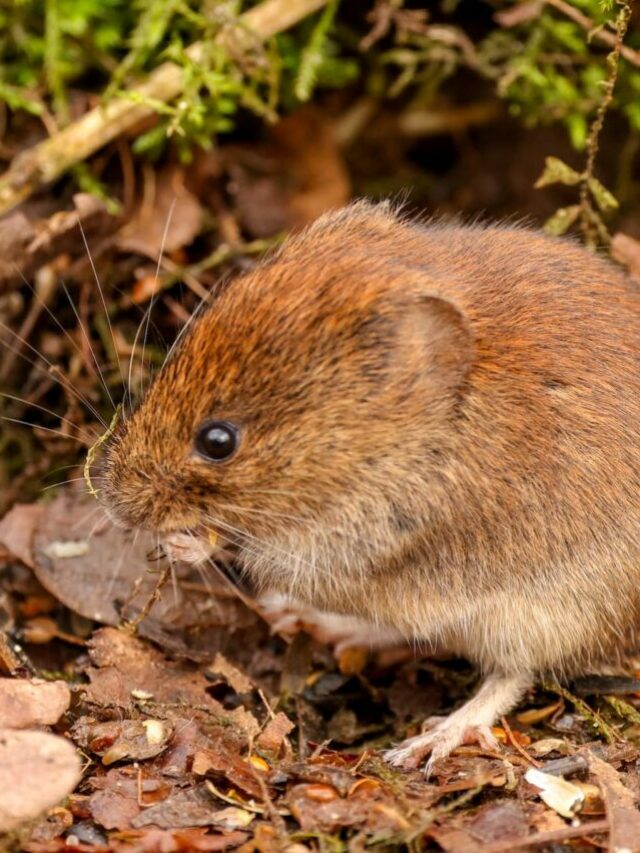
| Scientific Name | Microtus |
| Where It Lives | Africa, Europe, Asia, America |
| What It Eats | Grasses, tubers, plants |
| Conservation Status | Least Concern (LC) according to the IUCN Red List |
Fun Facts: Voles are known to be empathic; they console one another when they’re feeling down.
Many species fall in the Vole group, and they are widely distributed across the globe in a wide range of habitats, from mountains to grasslands.
These small rodents have blunt snouts and their tails are shorter in length than their bodies. While they may be called field mice in North America, they are more closely related to lemmings and hamsters. These mouselike animals can be either nocturnal or diurnal, depending on the species. Most of their species are terrestrial, with some exceptions, including the Sonoma tree and Arboreal red voles who live in treetops!
20. Vulture
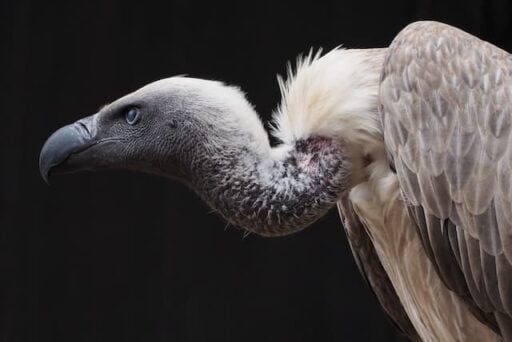
| Scientific Name | Accipitriformes |
| Where It Lives | Worldwide |
| What It Eats | Carrion, garbage |
| Conservation Status | Least Concern (LC) according to the IUCN Red List |
Fun Fact: Vultures gorge themselves on food, and then spend long periods resting and digesting what they eat.
There are 22 Vulture species in the world, and they are found across the globe with the exception of Australia and ocean islands.
Although these scavenging birds will eat almost anything from carrion to garbage, it is quite rare to see them eating live prey. However, some species will see the opportunity for an easy meal and take helpless young animals. Vultures adhere to a strict hierarchy when it comes to feeding, the bigger and stronger ones will be the first to eat, while the smaller vultures will wait for whatever scraps are left over. Vultures carry significant symbolism and are seen in many mythologies as harbingers of doom and death.
Summary of Animals that Start with V
And we’ve gotten to the end, we hope you enjoyed the list of animals that start with V. There are many others, but having introduced you to these, why not take a look at this other list of animals that start with a?
- Animals That Start With A
- Animals That Start With B
- Animals That Start With C
- Animals That Start With D
- Animals That Start With E
- Animals That Start With F
- Animals That Start With G
- Animals That Start With H
- Animals That Start With I
- Animals That Start With J
- Animals That Start With K
- Animals That Start With L
- Animals That Start With M
- Animals That Start With N
- Animals That Start With O
- Animals That Start With P
- Animals That Start With Q
- Animals That Start With R
- Animals That Start With S
- Animals That Start With T
- Animals That Start With U
- Animals That Start With W
- Animals That Start With X
- Animals That Start With Y
- Animals That Start With Z
- Top 4 Animals and Wildlife Invading The United States - October 20, 2024
- Animals and Wildlife in North Carolina - October 20, 2024
- Leatherback Turtle Breaks Record For Deepest Dive (4,409 feet) - October 20, 2024


